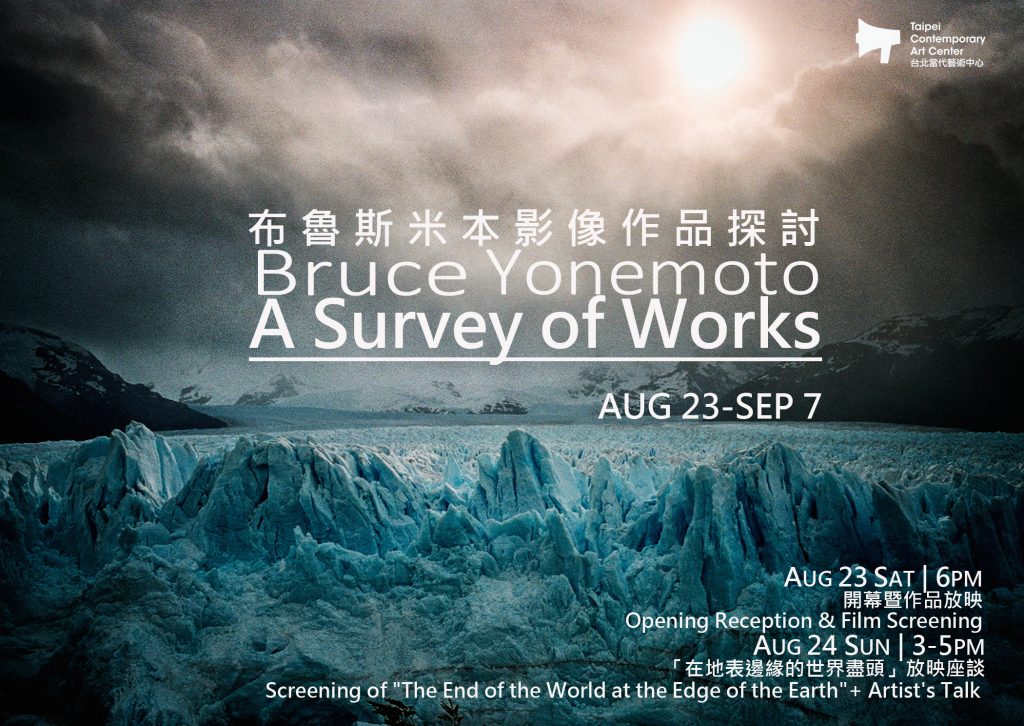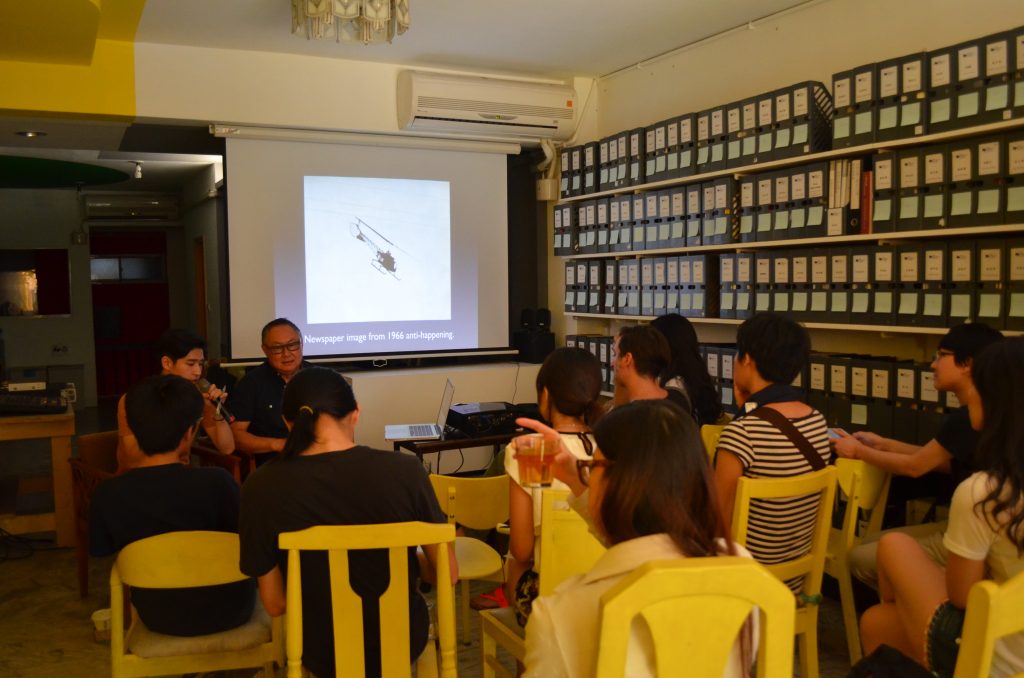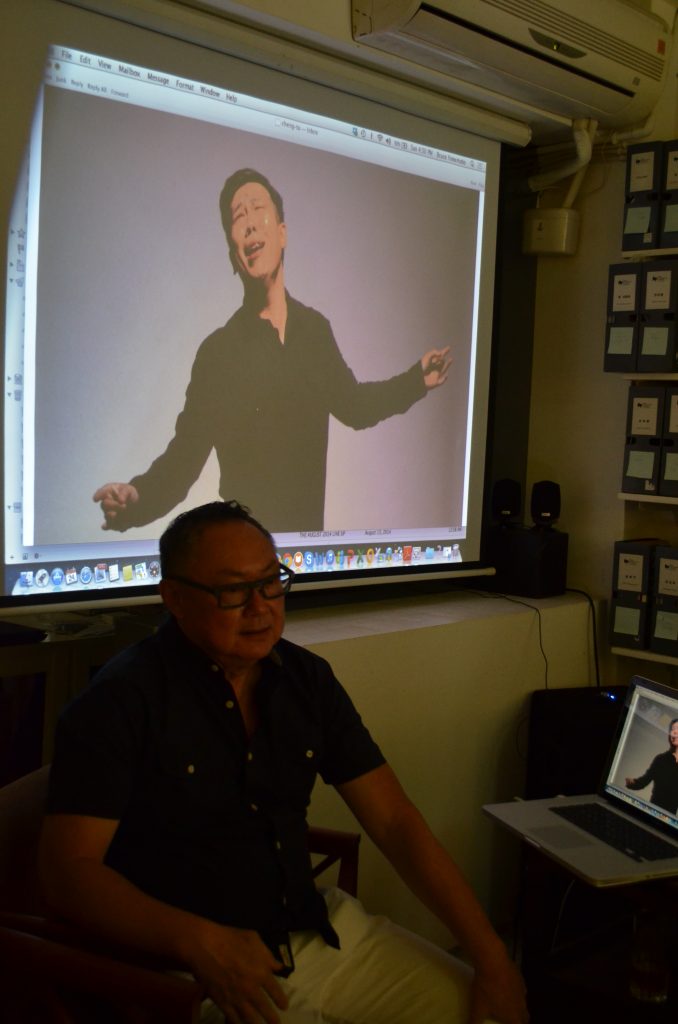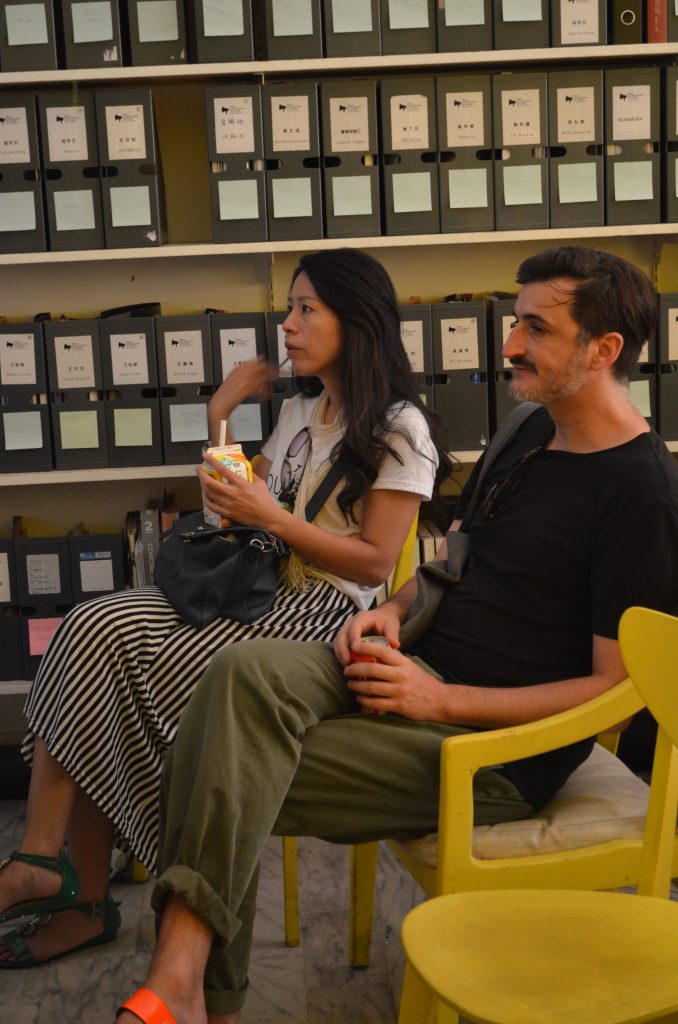2014.8.24 3~5pm
Bruce Yonemoto|Screening of “The End of The World At The Edge of The Earth” + Artist’s Talk
布魯斯米本|「在地表邊緣的世界盡頭」放映座談
(For English please scroll down)
(The talk is in English with Chinese interpretation. 本座談以英文進行,並富有中文翻譯)
布魯斯米本
布魯斯米本的創作發展于藝術與商業的跨域之間,作品的再
米本曾多次獲獎,包含從美國國家藝術基金會、美國電影協
布魯斯米本|影像作品探討
布魯斯米本現在定居在美國加洲,他的作品解構再重塑了大
〈在地表邊緣的世界盡頭〉
本作品啟源於一個詩意的觀察:在阿根廷,有兩件事曾經同
〈河童〉
(1986,26分,彩色,有聲)由布魯斯米本、諾曼米
〈聽似真善美〉
(2007,4分14秒,彩色,有聲)由布魯斯米本製作
〈墓穴〉
(1984,11分45秒,彩色,有聲)由布魯斯和諾曼
〈布玲雞〉
(1988,15分30秒,彩色,有聲)由布魯斯和諾曼
〈講座 文字記錄〉
文/沈芸可
Bruce Yonemoto: A Survey of Works
布魯斯米本影像作品探討
布魯斯米本現定居於美國加州,其作品發想來自於藝術與商
布魯斯米本此次來到當代藝術中心影像進行作品分享,由於
Bruce Yonemoto
Bruce Yonemoto has developed a body of work which positions itself within the overlapping intersections of art and commerce, of the gallery world and the cinema screen. His recent work developed with funding from Creative Capital deals with the discovery of the real and poetic convergence between two phenomena specific to Argentina. It is the site of one of the few growing glaciers in the world as well as the last growing Lacanian psychoanalytic practice. His recent photo and video work was developed and produced in Vietnam. He is currently developing a performative project in Taiwan and a project exploring Cinema Novo in Rio de Janeiro.
Yonemoto has been honored with numerous awards and grants from the National Endowment for the Arts, the American Film Institute, The Rockefeller Foundation, and the Maya Deren Award for Experimental Film and Video. In 1999 Yonemoto was honored with a major mid-career survey show curated by Karen Higa at the Japanese American Museum in Los Angeles Bruce’s solo installations, photographs and sculptures have been featured in major one-person shows at the ICC in Tokyo, the ICA in Philadelphia, the St. Louis Art Museum and the Kemper Museum in Kansas City. He has had solo exhibitions at Alexander Gray Gallery, New York, Blum & Poe, Los Angeles, Tomio Koyama, Tokyo, Galerie Quynh, Ho Chi Minh City and his work was featured in Los Angeles 1955-85 at the Pompidou Center, Paris, and the Generali Foundation, Vienna, , the 2008 Gwangju Biennial. Pacific Standard Time, Getty Research Center and most recently an expansive survey show in Kanazawa, Japan.
Bruce Yonemoto ︱A Survey of Works
California-based artist Bruce Yonemoto deconstruct and rewrite the hyperbolic vernacular with which the mass media constructs cultural mythologies. Ironically employing the image-language and narrative syntax of popular forms, such as soap opera, Hollywood melodrama and TV advertising, they work from “the inside out” to expose the media’s pervasive manipulation of reality and fantasy.
<The End of the World at the Edge of the Earth>
This work began with the poetic observation that two things were simultaneously growing in Argentina: 1) a glacier named Perito Moreno in Patagonia; and 2) a clinical psychoanalytic practice founded by Jacques Lacan. The project elegantly combines Carson’s research on Lacan and Yonemoto’s filmic practice in the form of a film and video installation. The work is currently in production.
<Kappa>
(1986, 26 min, color, sound) By Bruce and Norman Yonemoto in collaboration with Mike Kelley. Kappa is a boldly provocative and original work. Deconstructing the myth of Oedipus within the framework of an ancient Japanese folk story, the Yonemotos craft a highly charged discourse of loss and desire. Quoting from Bunuel, Freud, pop media and art, they place the symbology of Western psychosexual analytical theory into a cross-cultural context, juxtaposing the Oedipal and Kappa myths in a delirious collusion of form and content.
<Sounds Like the Sound of Music>
(2007, 4:14 min, color sound) By Bruce Yonemoto, Sounds Like the Sound of Music is a media work which engages the Peruvian culture by translating an iconographic American musical song into the indigenous Incan language of Quechua. This representation will, offer an insight to a colonized culture that has successfully coexisted to this day with the dominant societies of Europe and the US. The Quechua language is spoken by 13 million people across the Andes and South America
<Vault>
(1984, 11:45 min, color, sound) By Bruce and Norman Yonemoto, In this tour-de-force of stylized deconstruction, the Yonemotos rewrite a traditional narrative of desire — boy meets girl, boy loses girl. Employing the hyperbolic, melodramatic syntax of Hollywood movies and commercial TV, they decode the Freudian symbology and manipulative tactics that underlie media representations of romantic love, and expose the power of this media “reality” to construct personal fictions.
<Blinky>
(1988, 15:30 min, color, sound) by Bruce and Norman Yonemoto and Jeffrey Vallance. Writes Bruce Yonemoto, “In the novella Blinky The Friendly Hen (1978), artist Jeffrey Vallance documented the supermarket purchase of a frozen chicken and its burial in the Los Angeles S.P.C.A. Pet Memorial Park. Naming the fryer Blinky, Vallance transformed poultry into pet, paying tribute to the billions of hens sacrificed each year for our consumption. Ten years later questions of the true cause of Blinky’s death continue to swirl. Blinky, the videotape, documents the search for this cause. Alas, like the shroud of Turin, Blinky’s death cannot be completely resolved. Blinky’s ten-year story ends where it began, in our culture’s glistening, dreamlike symbol of heavenly closure, the supermarket.”




